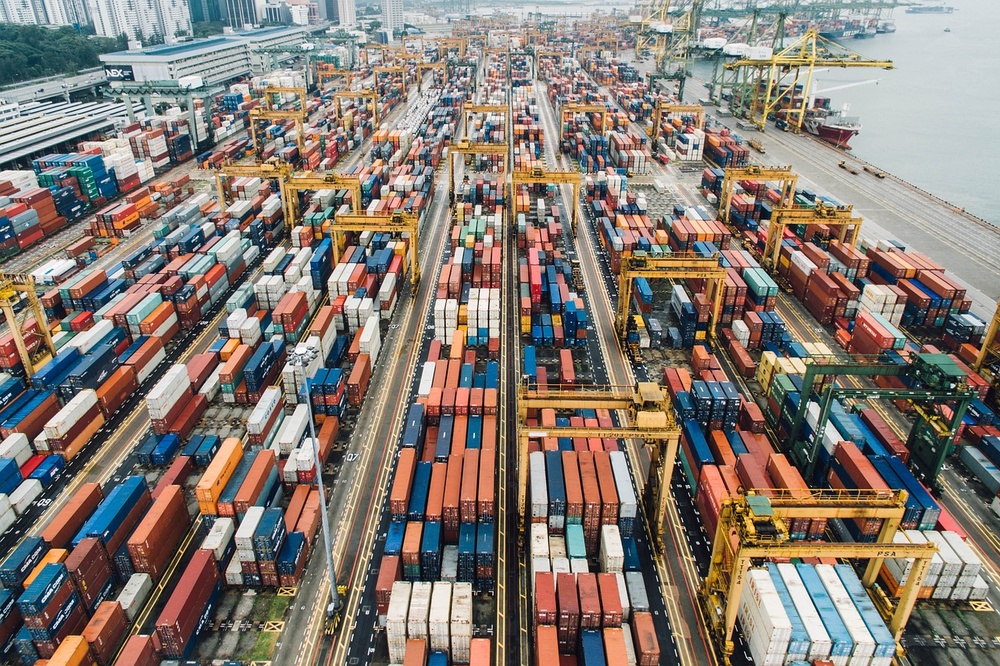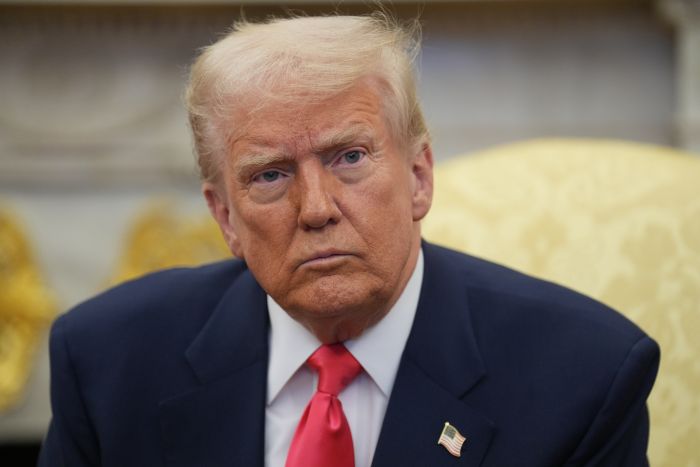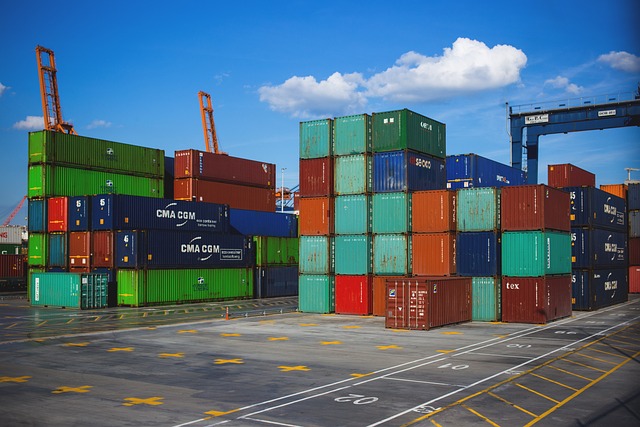- #Economy & Trade
- #Global Issues
- #South Korea
- #US Foreign Policy

▶ The Trump administration’s latest tariff measures against South Korea rest on shaky analytical and legal grounds.
▶ The supposed justification of “reciprocity” is undermined by flawed assumptions and methodological inconsistencies.
▶ The weaponization of tariffs risks weakening long-standing relationships at a time when global economic and security challenges require deeper cooperation.
▶ South Korea can turn the challenge of U.S. tariffs into an opportunity by leveraging trade negotiations to secure favorable investment conditions in key sectors, strengthen bilateral ties, expand its manufacturing footprint in the U.S., and deepen cooperation with other strategic partners.
The
Trump Administration's tariffs have reignited debates over their utility and
repercussions, particularly for strategic allies like South Korea. Its
supporters, for instance, have pointed out the value of tariffs in introducing
better terms of trade for the United States while generating significant revenues
for the federal government;[i]
however, its critics have questioned whether the benefits are worth the risk of
protectionism and undermining relations with allies.[ii]
What
Trump's Tariff is Not
Before
weighing the relative benefits and costs of tariffs, it is worth clarifying
what these tariffs are not. One common myth about President Trump's tariffs is
that they are "reciprocal." President Trump has stated that
reciprocity is the guiding principle behind his tariffs. For instance, he has
stated that "whatever countries charge the United States of America, [the
U.S.] will charge them no more, no less… they charge [the U.S.] a tax or tariff
and the [the U.S.] charge[s] them the exact same tax or tariff."[iii] The problem with this logic is that South
Korea's tariffs on U.S. goods is relatively minimal if not due to phase out in
a short period of time.
Composition
of U.S. Imports to South Korea According to Maximum and Minimum Estimated
Tariff by HS-6 Category, 2024
Note: The diagram depicts boxes representing each HS-6
category of goods facing South Korean tariffs. The size of each box depicts the
relative value of imports. Since tariffs are defined at a more granular level
than HS-6, the box color in the upper diagram indicates the highest applicable
tariff within the corresponding HS-6 category, while the box color in the lower
diagram indicates the lowest applicable tariff within that HS-6 category. The
darker the shade of blue, the higher the tariff applicable to the goods
category. Gray shading indicates 0 percent tariffs. Sources: International
Trade Center and U.S. Department of Agriculture
According
to one recent analysis[iv], for
instance, approximately 95% of U.S. exports to South Korea are tariff-free
under the Korea-U.S. Free Trade Agreement (KORUS FTA), with remaining tariffs
on agricultural goods largely governed by phased tariff-rate quotas set to
expire by 2026. The data-driven assessment places South Korea’s effective
tariff rate on U.S. imports in the range of 0.19% to 2.87% in 2024. These
figures significantly undercut the higher figures cited by the Office of the
U.S. Trade Representative (USTR), which is largely driven by the size of the
U.S. trade deficit with South Korea. The more sensible explanation is that the
tariffs initially announced on April 2 along with the justification provided by
the administration on how those rates were calculated appear to suggest that
reciprocity, in the strictest and traditional sense, is not the main objective.
The
Logic of Trump's Tariffs
Instead,
the U.S. Trade Representative's (USTR) explanation appears to assume a link
between these tariffs and the U.S. trade balance whereby the Trump tariffs are
rates "that would drive bilateral trade deficits to zero."[v] However,
trade deficit is not necessarily due to unfair trade practices. Rather, they can
be the result of broader macroeconomic imbalance – such as differences in the
size of the economy, currency exchange rate, demographic differences, and
product specialization.
For
instance, South Korea’s population is roughly 51 million, compared to 340
million in the United States, and the GDP per capita of former is significantly
lower than that of the latter. Such structural disparities naturally produce
asymmetries in trade even in the absence of tariffs. The study correctly points
out that even under conditions of zero tariffs, perfect trade balance is
unlikely due to inherent economic differences, which would explain why the U.S.
exported $72 billion in goods to South Korea and imported $128 billion in 2024,
creating a $56 billion trade deficit.
Trade
Between the United States and South Korea, 2024
Source: Korean Customs
Service
Nonetheless,
President Trump has consistently maintained that he is more concerned about the
long-term consequences of trade and its impact on American jobs and wealth
accumulation. The tariff has also been touted as a revenue-generator to offset the
tax cut bill which was recently signed into law. The 25% tariff on $128 billion
worth of South Korean imports is estimated to generate $32 billion in annual
revenue. In short, the president is able to use tariffs as a tool to address
numerous issues on his agenda.
Implications
for South Korea and US-Korea Relations
While
the president has postponed parts of his tariffs to renegotiate better terms of
trade with numerous countries, dark cloud still hangs over the fate of the
bilateral relationship which has looked shaky at times. Historically, the
U.S.-Korea alliance has not only ensured regional security but also promoted
mutual economic growth. South Korea’s industrial rise was facilitated by U.S.
aid and market access, while U.S. companies have long benefitted from South
Korea’s technological advancements and growing consumer base. South Korea
stands to provide some much-needed manufacturing revitalization, which
President Trump seeks to strengthen during his time in office.
The
use of punitive economic measures in the absence of clear justification or fair
process, however, risks eroding trust. It signals to allies that even
good-faith trade partners are not immune to sudden, politically driven
disruptions. This could prompt countries like South Korea to hedge against U.S.
instability by diversifying trade ties and pursuing greater regional economic
integration in Asia.
Even
more importantly, tariffs function as a regressive tax on consumers and
businesses, increasing costs on imported goods and creating uncertainty in
supply chains. While the president is correct to point out the faults with the
free trade order, there are other ways to address these shortcomings than
through tariffs.
A
Better Way Forward
Rather
than escalating tariffs, the U.S. could consider using existing institutional
mechanisms under KORUS FTA and the World Trade Organization (WTO) to address
some of the problems related to non-tariff measures, such as technical barriers
to trade, sanitary and phytosanitary standards in agriculture, restrictions on
cloud computing services, and data localization requirements. These forums
allow for technical dialogue, mutual concessions, and policy coordination,
which can be far more effective than blunt economic coercion.
For
instance, issues such as Korea’s approval process for genetically modified
products or digital service barriers can be addressed through joint working
groups, transparency reforms, and standard harmonization. These avenues
preserve the integrity of trade institutions and reduce the risk of spiraling retaliatory
escalation.
Additionally, the U.S. could reframe its trade engagement with South Korea around shared strategic priorities, such as building resilient supply chains and revitalizing the American manufacturing base. Already, South Korean companies have made significant investments in the United States and look to expand its presence in defense industrial production and energy. Deepening this cooperation would better reflect the economic interdependence and geopolitical alignment of the two nations.
Legal
Maneuvering and Questionable Precedent
The
Trump administration's decision to invoke the International Emergency Economic
Powers Act (IEEPA) as the basis for its April tariffs suggests that the
administration prefers expediency over process, raising concerns about the transparency
and legality of these tariffs. While the lower courts have ruled against the Trump
administration by questioning whether it had a compelling "emergency”
related to trade that justified imposing the highest tariffs since 1930, the
administration looks undeterred in its desire to use various legal means to
achieve its objectives. The legal challenge is still being reviewed in the appellate
court, but it is important to recognize that the administration still has other
options, including Sections 301, 232,
and 338, to impose additional tariffs regardless of what happens.
Conclusion
The Trump administration’s latest tariff measures against South Korea rest on shaky analytical and legal grounds. The effective tariff rate on U.S. goods entering South Korea is also very low, and a majority of trade occurs tariff-free. The supposed justification of “reciprocity” is undermined by flawed assumptions and methodological inconsistencies. However, South Korea must come to terms with the reality that the Trump administration is not likely to stop in its push to squeeze more concessions out of Seoul.
The
weaponization of tariffs risks weakening long-standing relationships at a time
when global economic and security challenges require deeper cooperation. As
public opinion grows increasingly skeptical of the economic fallout from these
tariffs, South Korea must think about how to use this challenge as an
opportunity to further build on its strengths.
On
the one hand, South Korean companies stand to benefit from cooperating with the
U.S. government by establishing favorable conditions for its investments in the
United States. Examples of favorable investment positions in defense industry,
nuclear power, energy infrastructure, semiconductors, EV batteries, robotics,
and AI are just a few areas where South Korean companies can have a large
windfall should favorable investment conditions be included as part of the
trade negotiation. South Korea can also look to use this opportunity to
redefine and even strengthen the bilateral relationship in such a way that
reinforces the mutual benefits for both countries. Not only may South Korean
companies gain broader and more exclusive access to the U.S. market through
direct investment, but a larger manufacturing footprint in the United States would
mean better performance and spillover benefits to South Korea as well. Of
course, this can happen while South Korea can continue to deepen its engagement
and cooperation with other like-minded partners.
[i] Robert Lighthizer, “Want
Free Trade? May I Introduce you to the Tariff.” New York Times, February
6, 2025, https://www.nytimes.com/2025/02/06/opinion/tariff-free-trade-new-system.html.
[ii] Wattles, Jackie. “Larry
Summers: Trump Steel and Aluminum Tariffs Are ‘Crazy, Dumb’ Economic Policy.”
CNN Money, March 5, 2018. https://money.cnn.com/2018/03/05/news/economy/larry-summers-trump-steel-tariffs/index.html.
[iii] Edward Alden and
Jennifer Hillman, “Donald Trump Wants Reciprocity in Trade: Here’s a Closer
Look,” Council on Foreign Relations, February 14, 2025, https://www.cfr.org/article/donald-trump-wants-reciprocity-trade-heres-closer-look.
[iv] Osterberg, Nils
Wollesen, and J. James Kim. "Fairness and Reciprocity? Reconsidering
Trump’s Liberation Day Tariffs on South Korea." Korea Economic
Institute of America, June 27, 2025. https://keia.org/the-peninsula/fairness-and-reciprocity-reconsidering-trumps-liberation-day-tariffs-on-south-korea-2/.
[v] Office of the United
States Trade Representative, Reciprocal Tariff Calculations, April 2025,
U.S. Trade Representative, https://ustr.gov/sites/default/files/files/Issue_Areas/Presidential%20Tariff%20Action/Reciprocal%20Tariff%20Calculations.pdf.

